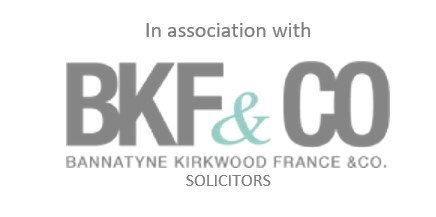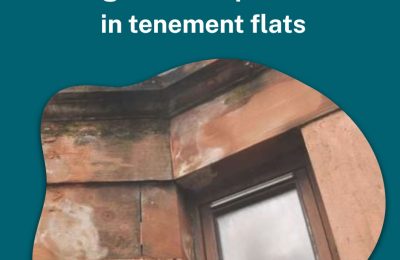Whilst we have looked at the initial version of The Housing (Scotland) Bill (the Bill) and its passage through the Scottish Parliament, the Bill has been finalised and was passed on 30 September 2025. It received Royal Assent on 6 November 2025 and is now known as the Housing (Scotland) Act 2025 (the Act). Whilst the Act has received Royal Assent, only part 8 is currently in force which largely provides for further regulations. A copy of the Act can be found here
https://www.legislation.gov.uk/asp/2025/13/contents/enacted
This blog only focuses on rent controls contained within the Act. Later blogs will look at other parts of the Act.
Rent Control Areas (RCAs)
Probably highlighted as the most significant change to be introduced by the Act, but what we have ended up with is arguably a “warmed up” version of Rent Protection Zones (RPZs) that were envisioned by the Private Housing (Tenancies)(Scotland) Act 2016 (the 2016 Act) but that were never enacted.
Generally
The Act puts a duty on Local Authorities to assess the rent conditions within their area and to report to the Scottish Government (SG) no later than 31 May 2027 and at least every 5 years thereafter (there are further provisions for interim assessments where changing conditions render that necessary and which would allow the RCA to be revoked or its size restricted as well as provision for further regulations to allow “above rent cap” increases and exemptions).
Local authorities have to set out whether they recommend the setting up of a RCA or not. An important issue therefore is the gathering of information by Local Authorities, and the Act has additional powers to compel landlords to provide information to local authorities and for them to share it with the SG. This includes information on rent levels, rent increases and information on the property itself.
Thereafter, it is for the SG to decide on whether or not to put a RCA in place. The test for whether a RCA should be implemented is:
- Is a RCA necessary and proportionate for the purpose of protecting the social and economic interests of tenants in the area; and
- Is a RCA a necessary and proportionate control of the landlord’s use of their property in the area?
There is a duty on the SG to consult on the need for RCAs and to report to the Scottish Parliament.
Duration
Any RCA will be in place for a maximum of 5 years. There are provisions for interim assessments and to allow the RCA to be revoked (where it is no longer necessary or proportionate) or its geographical area to be restricted. The Act also contains a specific power to modify the law in RCA areas by way of further regulations to regulate rent increases for a further period of 12 months after any RCA ends.
Private Residential Tenancies only
RCAs only affect Private Residential Tenancies (PRTs). However, buried near the end of the Act is a section that provides for further regulations which, if enacted, would convert all remaining assured (including short-assured) tenancies to PRTs from a specified date (which would not be less than 12mths from the date those regulations come into force). If that happens, all tenancies (except any remaining Regulated tenancies under the Rent (Scotland) Act1984) would become PRTs anyway.
Controls on rent in RCAs
Whilst not in the original version of the Act, what is now provided for is what is called the “permitted rate”. The permitted rate is assessed with reference to the previous 12 months consumer price index (CPI) plus 1% but capped at a maximum of 6%.
Effect on new tenancies where a property has been let previously
Whilst the rent controls themselves focus in on rent increases they do not just apply to “in tenancy” increases.
In RCAs there will be limits imposed on initial rents for new tenancies (what are called a “current tenancy”) where the property was “previously let” in what is referred to as an “immediately preceding tenancy”. That will apply where a new tenancy is being set up for a property in a RCA which involves the same (or substantially the same) property that was let under a PRT (or assured tenancy) within 12months or less before the start of the “current tenancy”.
Where that is the case, the initial rent will be restricted by either:
- Where there was a rent increase issued in the preceding tenancy within 12months before the start of a new or tenancy, then the initial rent must be the same amount as the final rent in the proceeding tenancy.
- Where there was no rent increase within the preceding 12months (but the property was “previously let” ie within the proceeding 12months), then the initial rent for that new tenancy cannot be more than the final rent charged in that preceding tenancy plus the permitted rate.
Where a property is purchased by a landlord with “vacant possession” and the let is the first PRT since the purchase, then such a tenancy will be classed as an “excluded property” and the initial rent can be set at a market rent. Thereafter, the rent controls will apply. Likewise, where a property has been vacant for more than 12months prior to the start date of the new tenancy, there will be no “immediately preceding tenancy” and market rent can be charged (again after that rent controls will apply).
Frequency of rent increases
Rent increases are limited to once every 12months regardless of whether or not there is a new tenancy.
Exemptions
Provision has been made for further regulations (not available as yet) to set out what properties may be exempt from rent controls or may be subject to modified restrictions. No specific details are given but they can be due to “circumstances relating to the landlord, tenant or property type”. Whilst not specified in the Act, the SG has said (on 5 September 2025) that their intention is to bring forward regulations that would exempt mid-market rent properties and build-to-rent properties. Full details of these exemptions will be subject to further consultation and stakeholder engagement over the coming months.
Tenant challenge
There are 2 routes available to tenants:
- Tenants can refer matters to a rent officer where they think the proposed rent increase is above the permitted rate.
- Where a tenant in a “current tenancy” thinks that the initial rent has been set too high with reference to the previous tenancy or that the landlord is seeking to increase the rent earlier than 12months after the last rent increase, they can refer direct to the First-tier Tribunal.
In both cases the Act states that such referral can only occur where the tenant notifies the landlord in writing within 30 days of receipt of any rent increase notice. There is a further 21 day period allowed for the landlord and tenant to reach an agreement on what should happen and to vary things. If no agreement is reached, then a tenant has up until 42days after giving their original notice to lodge an application/appeal with the tribunal.
There are further rules about how a rent officer, or the tribunal should deal with such referrals and to do with under or over paid rent, but these are not particularly material or different to what happens for rent appeals generally. However, what is different is that there are provisions for further regulations that would allow the First-tier Tribunal to issue penalties or order compensation where it has been determined that a landlord has tried to increase rent above the permitted rate or within 12 months of a previous increase.
Other rules to apply in RCAs
Adverts
Where you advertise a property for let as a PRT in a RCA that is not an exempt property, there is certain information that will have to be included in the advert. That is:
- Where the property was let previously (ie within the 12mths preceding the advert)
- The rent payable under the previous tenancy;
- Whether there was a relevant rent increase within the 12months preceding the date of publication of the advert;
- The date that increase took effect;
- The proposed rent for any new tenancy (which must mention that the proposed rent may change with fluctuations in the consumer price index); and
- Confirmation that the property is in a RCA.
- Where the property was not let previously (or it is the first let after being purchased with vacant possession)
- The proposed rent for any new tenancy; and
- Confirmation that the property is in a RCA.
Where the property is an exempt property, any advertisement for a property that will give rise to a PRT must include:
- A statement that the property is an exempt property;
- Why it is exempt; and
- Any registration details associated with it being an exempt property.
Other restrictions on rent increases that will apply even where there is not a RCA
Unlike the current position where there is nothing to stop landlords seeking their first rent increase at any time, the Act seeks to change that to mean that the first increase cannot take effect until at least 12months after the start of the tenancy.
There is also a subtle change to the approach of rent officers in the adjudication of rent disputes (and the tribunal if dealing with an appeal). Under the 2016 Act as it stands, where there is a referral by a tenant, the rent officer fixes the rent that will apply by reference to “open market rent”. That could mean the rent fixed is more than that sought by the landlord. The Act will change that, and rent will be fixed at the lower of open market rent (as determined by the rent officer) and what is stated on the rent increase notice. Similar changes are made for assured tenancies.
If you require any further information or advice, please contact us or watch our blogs for further updates.











